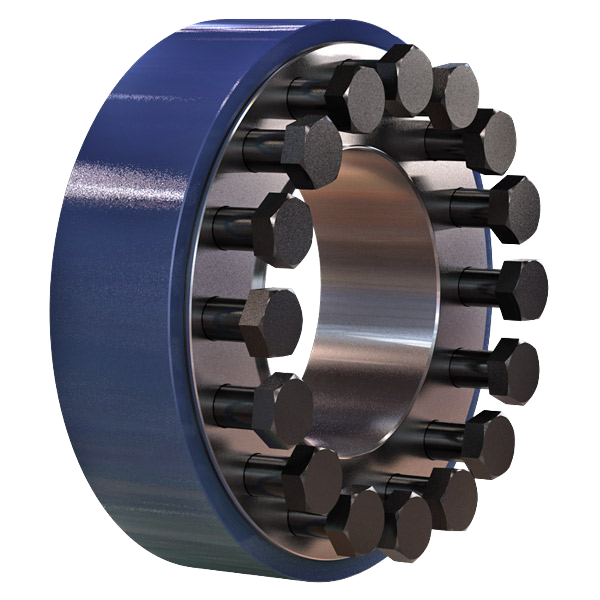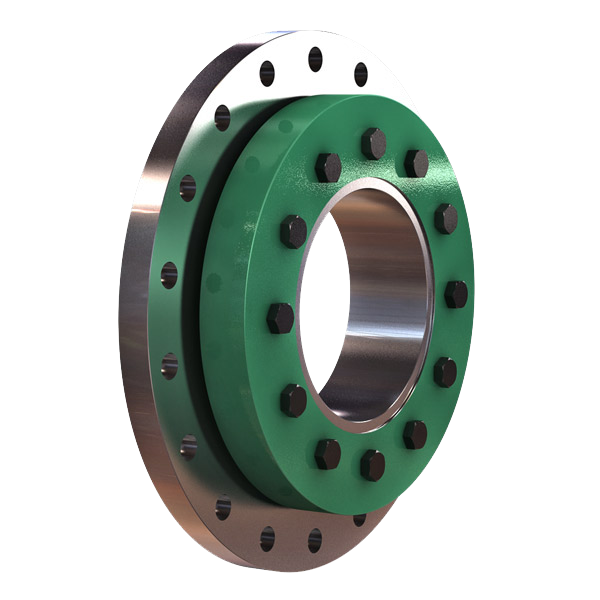TAS Schäfer Mounting Flanges
TAS Schäfer’s series of clamping elements. Perfect for connecting brake discs and pulleys securely.

Benefits
- High transmittable torques with short installation length
- Transmission of dynamic loads
- Transmittable torque from 20Nm to 426.000Nm
- Shaft diameters from 11mm to 1000mm
- Short assembly times/cost advantages compared to flange couplings
- Easy disassembly
“AFS”, “AF-12”, “AF-22” and “AF-23” series mounting flanges/external clamping elements can be used to connect disc-shaped attachments such as brake discs, pulleys and belt pulleys securely and backlash-free with friction. The connection to cardan shafts is also possible without any problems. Mounting flanges of the “AF-12”, “AF-22” and “AF-23” series consist of a conical pressure ring and a conical inner part. The mode of operation is comparable to displacement shrink discs. This means that by tightening the screws, the thrust ring is pulled axially onto the inner part. By using conical surfaces, the inner diameter of the inner part is reduced, thus exerting radial pressure on the shaft.
Unlike displacement shrink discs, mounting flanges of the series “AFS”, “AF-12”, “AF-22” as well as “AF-23” clamp directly onto the shaft. The clamping force applied by the external clamping element creates a frictional connection at the contact surfaces between the inner part and the shaft. Due to their small cone angle, the inner parts of the mounting flanges also have a pressure thread. This allows safe and easy disassembly at any time. Like displacement shrink discs, mounting flanges have a fixed displacement. This allows for simplified assembly without the use of a torque spanner.
Compared to other friction-locked connections, the transmittable torque of the mounting flanges is not defined solely by the applied pressure of the conical functional surfaces. Due to the design of the mounting flanges, the connecting screws also have a considerable influence on the torque to be transmitted. One reason for this is that, compared to other external clamping elements, mounting flanges are in the flow of forces. The transmittable forces are therefore transmitted from the mounting part through the external clamping element to the shaft and vice versa. For this reason, the design of the bolted connection must be given special consideration in the case of mounting flanges.
Resources


